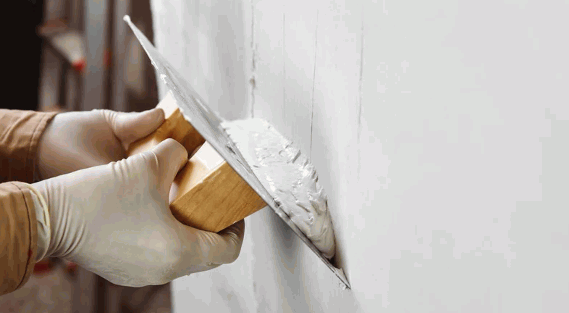Lime plaster has been a preferred building material for centuries, recognized for its distinctive properties and aesthetic appeal. This material encompasses various types, methods of production, and a wide range of applications in both interior and exterior environments, including fireplaces. It is important to understand the numerous benefits that lime plaster offers, such as breathability and durability, while also considering some potential drawbacks. By familiarizing themselves with the essential steps for applying lime plaster, individuals can be adequately informed and prepared to apply lime plaster effectively using techniques such as the three-coat system, ensuring the material’s durability and long-lasting properties.

What Is Lime Plaster?
Lime plaster is a traditional plaster type recognized for its versatility and ecological benefits, frequently employed in both historic structures and contemporary homebuilding projects. This traditional type of plaster is considered an eco-friendly option due to its natural composition and minimal environmental impact. Primarily composed of calcium carbonate, it is esteemed for its breathable properties, which facilitate moisture escape and mitigate damp issues within buildings.
The historical application of lime plaster can be traced back to ancient Egyptian and Roman civilizations, as well as to Ancient Jordan, underscoring its sustained relevance in architectural practices and plastering techniques. This material not only enhances the aesthetic appeal of structures but also serves as a natural dehumidifier, making it an excellent choice for a variety of plaster applications. Lime plaster is also a durable yet flexible material, capable of accommodating structural movements.

What Are The Different Types Of Lime Plaster?
There are several types of lime plaster, each possessing unique properties and applications tailored to specific requirements in construction and renovation projects. Hydraulic lime, recognized for its strength and water resistance, is frequently employed in external plastering applications, whereas non-hydraulic lime provides greater flexibility and breathability, making it suitable for internal wall finishes and for plastering walls in general. Specialized plaster mixes, such as Venetian plaster and tadelakt plaster, offer aesthetic alternatives that enhance interior spaces with their distinct finishes.
This diversity enables builders and designers to select the appropriate plaster based on environmental conditions and desired aesthetics, whether for new builds or renovation topics.
- Hydraulic lime is particularly suitable for areas exposed to moisture due to its capacity to set underwater, making it ideal for façades and outdoor structures.
- Conversely, non-hydraulic lime is often favored for indoor applications as it allows walls to “breathe,” thereby reducing the risk of dampness.
In terms of aesthetically pleasing options, Venetian plaster distinguishes itself with its shiny, polished finish that mimics marble, contributing to the creation of elegant, timeless interiors. Other plaster mixes, such as tadelakt plaster, also provide unique, visually appealing finishes. Tadelakt plaster, which originates from Morocco, provides a unique, smooth surface that is not only visually appealing but also functional, being waterproof and appropriate for damp areas such as bathrooms.
Ultimately, a comprehensive understanding of these various plaster options is essential to ensure that each project achieves both structural integrity and visual appeal.
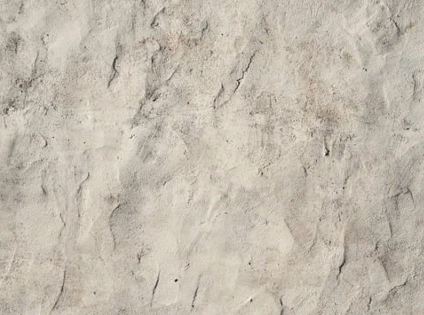
How Is Lime Plaster Made?
The process of producing lime plaster encompasses several critical steps that ensure the final product possesses the requisite properties for effective application in construction. These steps are critical for maintaining the soft natural properties typical of historical lime plaster.
Initially, high-quality calcium carbonate is sourced and subsequently combined with water and potentially mixed with additives like animal hair for plaster reinforcement. In certain instances, additives such as animal hair may be included to enhance reinforcement. This mixture is carefully blended to create a homogeneous paste that can be applied to both internal and external surfaces, underscoring the historical significance of lime plaster in various architectural techniques. The precise proportions of each ingredient are essential to achieving a balance that affects the plaster’s durability and workability.
- First, the calcium carbonate, typically derived from limestone, is finely crushed into a powder, a practice that dates back to ancient Egyptians.
- Next, water is gradually introduced to the mixture to prevent clumping and promote a uniform consistency.
- The incorporation of additives enhances specific characteristics, such as strength or flexibility, while historical practices often utilize locally available materials to create distinct compositions.
A comprehensive understanding of these methodologies not only connects contemporary artisans with ancient techniques but also contributes to the advancement of sustainable building practices. This traditional yet effective approach underscores the importance of lime plaster in both historical and modern gypsum plaster applications.

What Are The Uses Of Lime Plaster?
Lime plaster is a highly versatile material that is applicable in a variety of contexts, making it a preferred option among renovation specialists and homebuilding professionals.
It is suitable for plastering walls in both internal and external environments, effectively mitigating damp issues while facilitating moisture evaporation. Furthermore, lime plaster can be applied to fireplaces, enhancing both their aesthetic appeal and durability.
Its historical significance in architectural techniques underscores its continued relevance in numerous plastering applications.

Can Lime Plaster Be Used For Interior Walls?
Lime plaster can be effectively utilized for internal walls, as it serves as a breathable material that aids in regulating humidity and maintaining a healthy indoor environment. Its application contributes not only to the structural integrity of the walls but also provides a distinctive plaster finish that enhances the overall aesthetics of the interior space. Lime plaster is particularly suited for maintaining breathable coatings on internal walls, which is beneficial for managing humidity and improving air quality. The historical plasterwork associated with lime plaster underscores its effectiveness and enduring appeal in interior design.
By allowing walls to breathe, lime plaster significantly improves indoor air quality, effectively reducing moisture buildup and preventing mold growth—a prevalent concern in many contemporary buildings. Unlike non-breathable surfaces, lime plaster helps mitigate damp issues and moisture escape. This natural material is both functional and visually appealing, offering a variety of textures and finishes.
- The incorporation of lime plaster in interiors can evoke a sense of history, as it has been favored by artisans for centuries.
- Techniques such as trowel finishing or sponge finishing enable homeowners to achieve a smooth and elegant surface. Additionally, painting over lime plaster with lime wash can enhance both its protective qualities and aesthetic appeal.
- For those engaged in restoring historical properties, lime plaster is often the optimal choice for preserving authenticity.
When applied with skill, lime plaster not only enhances the beauty of any room but also contributes to the comfort and safety of the living environment.
Uncover more: What Is Exterior Rendering
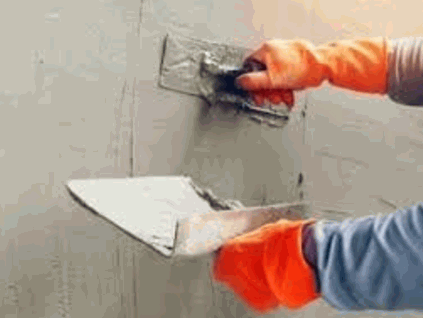
Can Lime Plaster Be Used For Exterior Walls?
Lime plaster is an exemplary material for external plastering due to its durable and flexible properties, which enable it to withstand varying weather conditions while effectively managing moisture escape. As a traditional breathable paint, it has been used in historic buildings to preserve structural integrity. This quality makes it an appropriate choice for safeguarding buildings against dampness and promoting long-lasting facade finishes. Its breathable nature contributes to the preservation of historic structures, ensuring their viability for future generations.
In contemporary construction and restoration practices, lime plaster is distinguished by several compelling advantages. Its environmentally friendly characteristics are particularly noteworthy, as it is composed of natural materials that are abundant and less harmful than synthetic alternatives. This aspect not only reduces the ecological footprint but also aligns with sustainable building practices.
The breathability of lime plaster plays a crucial role in effective moisture management. This feature allows walls to “breathe,” facilitating the regulation of humidity levels within a structure and helping to prevent the accumulation of mold and mildew. It’s particularly advantageous for historical plasterwork where maintaining original materials and techniques is crucial.
Key benefits of lime plaster include:
- Durability: It can withstand extreme temperature fluctuations without cracking, proving to be a long-lasting material.
- Flexibility: It accommodates structural movements, thereby enhancing longevity.
- Historic Preservation: It is ideal for restoring older buildings, and maintaining both aesthetic and structural integrity.
Ultimately, the selection of lime plaster contributes to the conservation of architectural heritage while ensuring a resilient and visually appealing finish.
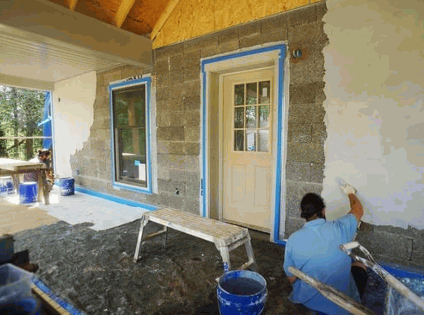
Can Lime Plaster Be Used For Fireplaces?
Lime plaster can be effectively utilized for fireplaces, providing both aesthetic appeal and essential fire resistance, which is critical for ensuring safety in residential environments. When applied correctly, it enhances the visual attractiveness of fireplaces while retaining the requisite properties needed to withstand heat exposure and prevent damage. This makes lime plaster a preferred option for renovation specialists aiming to revitalize fireplace designs in both modern and historic contexts.
The use of lime plaster not only guarantees that the fireplace remains visually striking but also improves its durability. The inherent fire-resistant characteristics of lime plaster enable it to endure significantly high temperatures without compromising its structural integrity. This property is crucial in mitigating potential hazards associated with traditional materials that may crack or degrade over time.
- Aesthetic versatility: Lime plaster is available in a variety of textures and colors, allowing for customization that aligns with individual design preferences.
- Eco-friendly application: As a natural material, lime plaster is less detrimental to the environment compared to synthetic alternatives.
- Historic Limes: Historic limes, such as those used by the Ancient Egyptians, provide insights into the durability and versatility of ancient lime plasters.
When applying lime plaster, it is imperative to consider the appropriate mix for optimal durability. This requires utilizing the correct proportions of lime to aggregate, ensuring a resilient finish that adheres effectively and withstands thermal expansion. Employing skilled application techniques, such as layering and texturing, can further enhance the overall appearance and efficacy of the plaster. Investing in quality materials such as Hydraulic Lime and expert application not only promotes safety but also contributes to the enduring beauty of the fireplace design.

What Are The Benefits Of Using Lime Plaster?
Lime plaster presents a multitude of advantages that enhance its appeal for both contemporary construction and historical renovation projects. As a breathable material, it proficiently manages moisture levels, thereby minimizing the risk of damp-related issues and fostering a healthier living environment. Notably, historic plasterwork from the Roman Empire demonstrates how effective lime plaster can be in preserving buildings.
Its durability and versatility permit its application in various contexts, including internal walls, external plastering, and fireplaces, while its aesthetic attributes contribute to the visual enhancement of any space. Furthermore, lime plaster is acknowledged as an environmentally friendly option, aligning with sustainable building practices and offering enduring solutions. The use of historic lime techniques highlights its capability to maintain architectural integrity.

Breathability
One of the primary advantages of lime plaster is its breathability, which facilitates the escape of moisture from walls, thereby significantly mitigating the risk of damp issues within a structure. This characteristic is essential for maintaining a healthy indoor environment, as it prevents the accumulation of mold and mildew that can adversely affect air quality. By employing breathable materials such as lime plaster, homeowners can ensure that their living spaces remain comfortable and dry. Additionally, lime plaster acts as a natural dehumidifier, further enhancing indoor air quality.
The unique property of lime plaster contributes to its capacity to manage moisture effectively, ensuring that excess humidity is not trapped within building materials. As moisture levels fluctuate, lime plaster can absorb and release moisture as needed, preventing it from reaching detrimental levels.
This dynamic interaction is particularly advantageous in regions prone to dampness, where traditional materials may fail to provide adequate ventilation. Effective moisture management is critical not only for preserving the structural integrity of a building but also for safeguarding the health of its occupants. The reduction of mold growth and the enhancement of air circulation foster a more comfortable living environment, ultimately promoting overall well-being.
- Improves indoor air quality
- Reduces health risks associated with dampness
- Helps maintain comfortable humidity levels
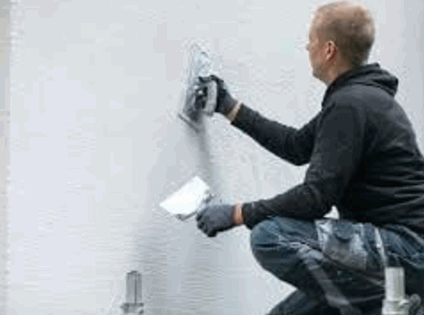
Durability
The inclusion of calcium carbonate in lime plaster enhances its durability.
Using ancient lime techniques can enhance the durability of modern plaster applications.
Ancient lime plasters, such as those used by the Ancient Egyptians, demonstrate the long-term durability of this material.
Lime plaster is recognized for its durability, offering a long-lasting material that can endure various environmental conditions while maintaining its structural integrity. Its robust yet flexible characteristics enable it to adapt to structural movements without the risk of cracking, making it an ideal choice for both internal and external applications. This longevity ensures that lime plaster continues to perform effectively for many years, thereby minimizing the need for frequent repairs and maintenance. The use of Non-Hydraulic Lime in its composition further contributes to its longevity and resilience.
The unique composition of lime plaster enhances its resistance to water and air infiltration, rendering it particularly effective in regions that experience significant weather fluctuations. For optimal performance, it is essential to apply the plaster using proper techniques, such as:
- Multiple thin layers
- Integration of natural fibers
- Ensuring adequate curing time
These methods significantly improve the plaster’s adherence to surfaces. Not only do they enhance its durability, but they also contribute to the aesthetic appeal of the structure. Regular maintenance practices, including periodic cleaning and repairs, can further extend the lifespan of lime plaster, allowing it to remain functional and visually appealing over time.
By comprehending the intricacies of application and care, builders and homeowners can ensure that their lime plaster installations endure the test of time and effectively address environmental challenges.

Versatility
The versatility of lime plaster supports a wide range of architectural techniques.
Modern homebuilding teams appreciate the versatility of lime plaster in various plastering jobs, both for historical renovation and new construction.
Lime plaster’s versatility is one of its most prominent characteristics, allowing for its application in a wide range of contexts, including internal walls, external plastering, and decorative finishes. It can be applied using various plastering techniques, which encompass the traditional three-coat system as well as specialized methods such as tadelakt plaster, which provides unique aesthetic qualities. This adaptability renders lime plaster a favored choice among renovation specialists and homebuilding teams focused on both functional and design-oriented projects.
This material not only fulfills functional requirements but also enhances the overall aesthetic appeal of a space. Its breathability and capacity to regulate humidity make it an optimal choice for older buildings undergoing restoration. Lime plaster can be tinted with natural pigments, allowing for seamless integration into diverse design schemes. Historical plasterwork, such as that found in ancient Jordan, attests to its enduring versatility.
Techniques such as:
- Sand packing to create a rustic texture.
- Burnishing for a smooth, polished finish.
Additionally, when using lime wash, it can impart a soft, matte appearance while enhancing the character of the property.
Ultimately, the flexibility of lime plaster not only contributes to its durability but also offers environmentally friendly advantages, aligning it with the principles of sustainability-driven construction practices.

Aesthetics
The aesthetic appeal of lime plaster is significant, as it provides a variety of exquisite finishes that can enhance any environment, ranging from traditional to contemporary styles. Techniques such as Venetian plaster and tadelakt plaster create remarkable visual effects, enabling homeowners to achieve a unique and sophisticated appearance. The soft natural tones of lime plaster contribute to a warm and inviting atmosphere, making it a preferred choice for both interior and exterior applications.
This distinctive material can seamlessly complement diverse architectural styles, whether it be the rustic charm of a farmhouse or the sleek lines of modern design. Lime plaster techniques allow for various textures and sheens, further enhancing the visual appeal:
- Venetian Plaster: Renowned for its polished finish, this technique creates depth and richness, making it ideal for grand spaces.
- Tadelakt Plaster: Originating from Morocco, this method is particularly effective in producing a shiny, water-resistant surface, suitable for applications such as showers or countertops.
- Lime Washed Finishes: These provide a more subdued, matte appearance, enriching a soft, vintage aesthetic.
By employing these techniques, lime plaster not only enhances the beauty of walls but also elevates the overall ambiance, imparting a timeless elegance to any space.

What Are The Potential Drawbacks Of Lime Plaster?
While lime plaster offers numerous benefits, it is important to acknowledge its potential drawbacks, which include cost, time-consuming application, and the need for specialized skills.
The initial investment for high-quality lime plaster and related materials may exceed that of modern gypsum or cement alternatives, potentially discouraging some homebuilders and renovation professionals.
Additionally, the application of lime plaster necessitates a specific level of expertise and knowledge regarding plastering techniques, rendering it less accessible for do-it-yourself enthusiasts. Consulting a renovation expert can ensure the successful application of this material.
Cost
The cost of lime plaster can be justified by its long-term benefits.
Considering the overall expenses of lime plaster, it can be more cost-effective in the long run.
Comparing the cost of various plaster types can help in decision-making for projects.
The cost of lime plaster can be mitigated by using traditional plastering techniques.
The cost of lime plaster is a significant consideration for homeowners and builders, as it typically necessitates a higher initial investment compared to modern alternatives such as gypsum and cement plaster. This elevated cost is attributed to the sourcing of high-quality materials and the labor involved in its application. Although the long-term advantages may justify the expenditure, the upfront costs can present challenges for certain renovation projects. Brands such as Earthborn Paints, Edward Bulmer, and Little Greene offer premium plaster products that cater to high-quality finishes.
When evaluating plastering options, it is essential to assess the overall expenses beyond the initial pricing. Lime plaster not only imparts a distinctive aesthetic appeal but also provides durability and breathability, thereby mitigating the risk of moisture accumulation over time. These benefits can contribute to reduced maintenance costs in the long run, particularly in humid environments. In contrast, while gypsum plaster may be less expensive initially, it often necessitates more frequent repairs and replacements.
Factors influencing lime plaster pricing include the quality of materials, labor intensity, and installation techniques.
Ultimately, while the initial cost of lime plaster may surpass that of its counterparts, the enduring benefits could result in savings that significantly outweigh the initial investment.

Time-Consuming Application
Consulting a historic buildings expert can streamline the lime plaster application.
Understanding plaster techniques can help reduce the time-consuming nature of lime plaster applications.
Lime plastering jobs require a high level of skill and can be labor-intensive, adding to the overall time needed for completion.
The application process for lime plaster is often more time-consuming than that of gypsum or cement alternatives, primarily due to its distinct plastering techniques and prolonged drying periods. Proper application of lime plaster typically necessitates multiple coats and sufficient curing time, which can extend the overall project timeline. This requirement may not be compatible with the schedules of certain renovation professionals or homeowners seeking expedited solutions.
In contrast to conventional materials, the lime plastering process occurs in several stages, each of which demands careful attention and diligence. Initially, the wall surface must be adequately prepared, a task that may take a full day depending on the specific conditions.
Following the preparation, the first coat, referred to as the scratch coat, is applied and requires time to partially dry before further work can proceed. This process can extend over several days. The following layers, including the floating coat and the finish coat, also require meticulous care, with each layer needing adequate time to cure effectively. Such attention to detail is reminiscent of historical plasterwork methods utilized in ancient Jordan.
- The scratch coat: 1-2 days to dry
- The floating coat: 2-3 days for application and drying
- The finish coat: up to a week for optimal results; similar to historical plasterwork methods used by the Ancient Egyptians and the Roman Empire
This commitment to curing and drying times is essential for attaining the strength and durability for which lime plaster is renowned, underscoring the importance of patience in the process to achieve the best possible results.

Requires Specialized Skills
Successfully applying lime plaster requires specialized skills and a comprehensive understanding of plastering techniques, which may pose a challenge for some DIY enthusiasts or less experienced renovation professionals. The complexities involved in mixing, applying, and finishing lime plaster necessitate knowledge that may not be readily possessed by all individuals engaged in plastering tasks, highlighting the importance of consulting with professionals who have expertise in this area.
In the realm of lime plaster application, there are several specialized skills that must be mastered. For example, understanding the appropriate mix ratios is critical to achieving the desired consistency and durability of the plaster. The troweling technique is intricate, as it must be performed in multiple thin layers to ensure proper adhesion and finish.
Professionals frequently encounter challenges such as:
- Understanding humidity levels that affect drying time
- Managing temperature fluctuations during the application
- Ensuring the underlying surface is adequately prepared
These challenges can be formidable for novices, emphasizing the necessity of hiring experienced experts for successful plastering projects. Their expertise extends beyond mere application; they can also offer valuable guidance regarding maintenance and restoration, which is essential for preserving the aesthetic and functional qualities of lime plaster. Additionally, many experts have experience working with historic buildings, which often require specialized knowledge of historical plasterwork.
How To Apply Lime Plaster?
Applying lime plaster necessitates meticulous attention to detail and a systematic approach to achieve optimal results in terms of both appearance and functionality.
The process commences with comprehensive surface preparation, ensuring that the substrate is clean and appropriate for plastering. Subsequently, the plastering techniques involve mixing the lime plaster to the correct consistency and applying it in layers, culminating in finishing touches that enhance both its durability and aesthetic appeal, similar to traditional architectural techniques employed throughout history.
Preparing The Surface
Preparing the surface is a critical initial step in the application of lime plaster, as it ensures proper adhesion and contributes to a smooth finish.
The significance of surface preparation in the context of lime plaster application cannot be overstated. It is essential that the substrate is both clean and stable to achieve the desired results. Ahead of the application of lime plaster, a thorough inspection of the surface must be conducted to identify any imperfections or loose materials.
It may be necessary to repair the underlying surface, which could involve:
- Removing any old paint or coatings that may interfere with adhesion.
- Filling in cracks or holes to create a uniform surface.
- Applying a bonding agent if the substrate is particularly smooth or non-porous.
Lightly dampening the surface can enhance the bonding process, as it prevents the lime plaster from drying too quickly. By dedicating time and effort to meticulous preparation, one can ensure that the application of lime plaster is both effective and durable, ultimately resulting in a visually appealing finish.

Mixing The Plaster
Mixing lime plaster to the appropriate consistency is critical for achieving the desired performance and aesthetic qualities in the final application. The mixture should be carefully balanced to ensure optimal workability and adhesion, typically involving precise ratios of lime and other additives, based on the specific plaster formulations being utilized. This meticulous mixing process directly affects the overall success of the plastering endeavor.
Achieving the perfect consistency for lime plaster necessitates a thorough attention to detail, as the interaction between lime, aggregate, and water results in a workable paste that adheres effectively to various surfaces. The selection of aggregate size significantly influences the application of the plaster; finer aggregates facilitate smoother finishes, whereas coarser aggregates enhance strength. Furthermore, the choice between different mixes, such as fat lime or hydraulic lime, can dictate the drying time and final hardness of the plaster.
- Hydraulic Lime: Offers faster setting times.
- Fat Lime: Provides notable flexibility and breathability.
It is essential to maintain an appropriate water-to-lime ratio during the mixing process, as excessive moisture can compromise the integrity of the plaster. This factor, along with choosing between Non-Hydraulic Lime and Hydraulic Lime, significantly influences the plaster properties. Consequently, professionals strongly advocate for testing mixes prior to application to ensure they meet the specific requirements of the project at hand.
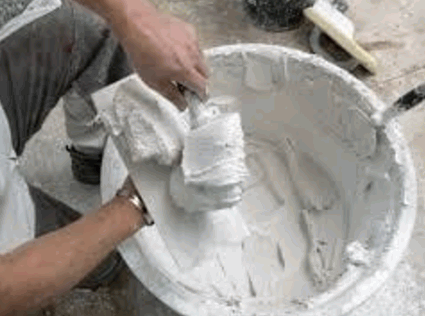
Applying The Plaster
The application of lime plaster typically requires a systematic approach, often employing a three-coat system to attain the desired thickness and finish. Each coat must be allowed to dry sufficiently before the subsequent application, ensuring proper adhesion and durability. While techniques may vary based on specific applications—such as the use of Tadelakt Plaster for decorative purposes—the fundamental principles of application remain consistent, drawing parallels to methods used by the Ancient Egyptians and in the Roman Empire.
To initiate the process, the surface must be thoroughly prepared, which includes cleaning and slightly dampening the area to enhance bonding. Following this, the first layer, known as the scratch coat, should be evenly applied and scored to create grooves that facilitate the adhesion of the second coat.
Subsequently, the application of the brown coat, which serves as a leveling layer, follows. After adequate drying, the finish coat is applied to achieve a smooth and polished appearance.
For those seeking a distinctive finish, tadelakt plaster may be utilized, known for its unique waxed surface. The polishing process for tadelakt requires specific tools and techniques to burnish the surface to a refined sheen.
Maintaining appropriate moisture levels and temperature during the curing process is critical for achieving optimal results, ensuring both longevity and aesthetic appeal.
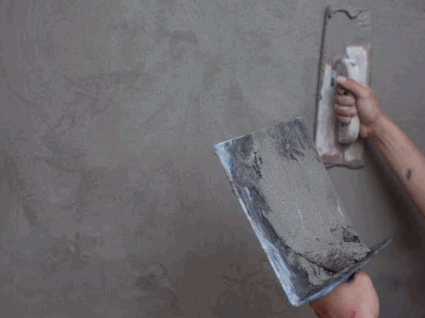
Finishing Touches
The finishing touches applied to lime plaster are crucial in determining both the overall appearance and durability of the plaster finish. These final steps encompass smoothing the surface, applying protective coatings when necessary, and enhancing aesthetic appeal through techniques such as lime wash or decorative finishes. Proper finishing not only improves the visual quality of the plaster but also contributes significantly to its longevity and performance.
When selecting finishes for lime plaster, a variety of options are available, allowing for customization that addresses individual preferences and functional requirements. Factors such as climate, intended use, and architectural style influence the selection of finishing techniques.
- Lime wash offers a traditional and breathable finish, capable of imparting beautiful color variations while preserving the unique texture of the plaster.
- Alternatively, a smoother finish can be achieved through the use of a trowel, creating a more contemporary appearance that may be better suited for modern settings.
- Incorporating decorative elements or textures can enhance the overall aesthetic while also addressing the need for moisture resistance.
Ultimately, understanding the implications of these choices is essential, as they affect not only aesthetics but also the plaster’s capacity to withstand environmental challenges over time. Choosing the right finish can also reflect the historical use of plaster in certain historic buildings, ensuring continuity in architectural heritage.

